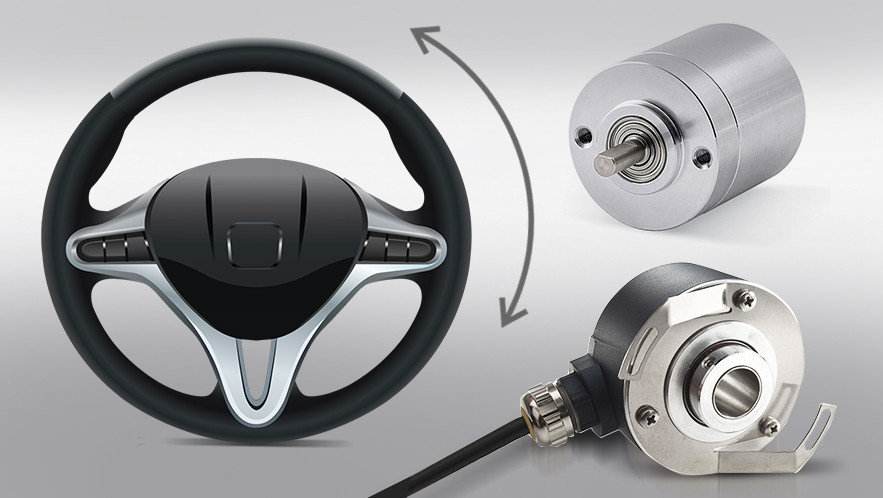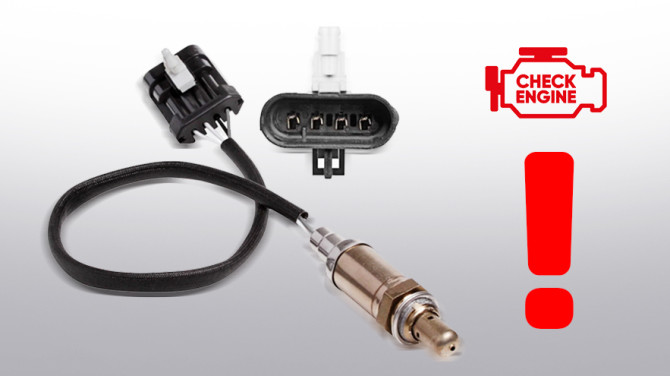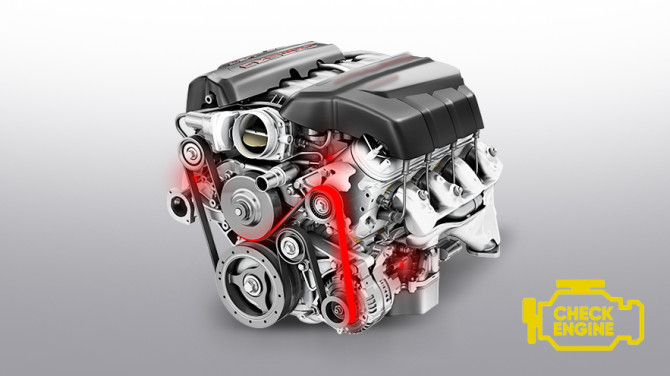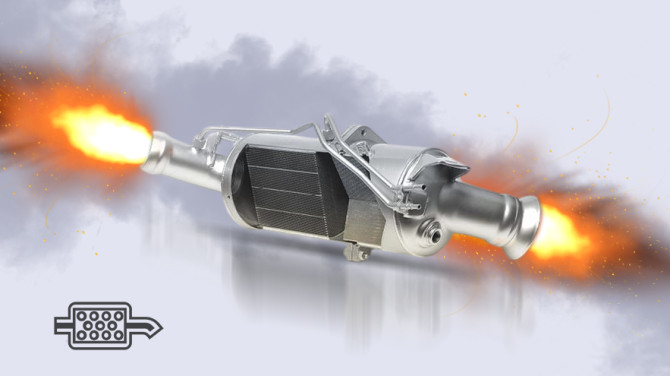Steering angle sensor - what it is and why it is needed

Modern vehicles are equipped with a multitude of sensors that monitor a variety of parameters. They collect data on engine performance, trajectory, driver behaviour, environmental conditions and road conditions to help ensure comfortable and safe driving. The steering angle sensor provides information not only to power steering, but also to systems such as ABS, ESP, active cruise control and cornering lights. All of these systems require highly accurate data on the position of the steering wheel and therefore also the front wheels of the vehicle.
What is a sensor – technical information
The steering wheel sensor monitors all movements of the steering wheel and transmits this data (usually via CAN bus) to the on-board computer. The computer subsequently sends the information to other systems for which it is critical. How the sensor data is used differs depending on the type and design of the vehicle. For example, in experimental autonomous cars they allow to correct the trajectory of movement, as well as to control the moment when a person takes the steering wheel.
Therefore, the correct operation of this sensor is of great importance for safety and convenience of driving the vehicle. Most often the sensor is installed on the electric steering column under the steering wheel, less often – on the shaft of the steering rack distributor or above the injury-proof shaft of the column.
The sensor is installed on the steering column.
What is a steering sensor responsible for?
The steering angle sensor is responsible for reading and simultaneously detecting the steering angle. In addition, it also performs the following functions:
- Transmitting steering position information to the ESP stabilisation system.
- Aiding in the distribution of torque between the wheels during manoeuvres (traction control function).
- Support for the correct operation of the automatic parking system.
- Support for adaptive cruise control and lane keep assist.
Sensor types
The steering wheel sensors come in a variety of types, with the three most common being:
- Potentiometric sensors – contact type, take measurements using resistance changes that increase in proportion to the angle of rotation. Despite the relatively simple design due to its main disadvantage – low reliability – this type of sensor is very rare in modern cars.
- Optical sensors – a more advanced version of the sensor device. They consist of an encoder disc, LEDs, photoresistors and a full rotation detection unit. The number of light sources and resistors depends on the sensor model. Optical sensors are more common in autos than potentiometric sensors.
- Magnetoresistive sensors – work on the basis of changes in the magnetic resistance of the material under the influence of a magnetic field. They have high accuracy and reliability, resistant to mechanical influences and contamination. Such sensors are most often used in modern cars due to their ability to operate in a wide range of temperatures and conditions.
Causes and signs of sensor failure
A damaged steering angle sensor is usually signalled by the vehicle's on-board computer. This can be in the form of a message on the screen, the ESP fault indicator or steering wheel indicator light illuminating yellow (if it is only a faulty steering sensor) or red if the power steering is completely disconnected. The driver may also experience some problems with the power steering:
- tight turning;
- jerks, lags during turns;
- jerking from side to side;
- late response to rpm;
- turning the car sideways.
In some cases, the driver may hear unusual sounds when turning the steering wheel, and may also notice some strange symptoms like dimming lights or intermittent operation of other electrical systems, such as seat heating. Most often the faults are felt during manoeuvring, but as you can see, the signs of a faulty steering angle sensor also appear while driving, which can create a significant danger on the road.
The main causes of sensor failure are as follows:
- Moisture or dirt in the sensor.
- Electrical faults (short circuit, broken wires).
- Mechanical damage (shocks, vibrations).
- Wear and tear of components due to long service life.
How much does a new part cost?
Like many other components of electronic systems, angle sensors, despite their size, are quite expensive. On average, the prices range from 200 to 1500 PLN, but can go up to 4-6 thousand depending on the make and model of the car. The cost of replacing and calibrating the sensor must be added to this, as it is unlikely that you will be able to install a new sensor on your own and get it working properly.
Calibrating the steering angle sensor
The sensor must accurately detect the straight-ahead position of the wheels as well as both extreme positions (left and right). This allows the operating range to be adjusted, the scale to be set and the necessary parameters to be calculated accordingly. The process is controlled by special software that is integrated into the vehicle's electronic control unit.
Modern sensors are characterised by extremely high resolution and accuracy, which makes it possible to record the steering wheel movements with accuracy up to several angular seconds. Therefore, even minor errors in settings can affect the operation of systems that depend on the steering angle sensor. Calibration allows synchronising the sensor with the driver's electronic assistants, ensuring their correct operation.
The calibration process involves connection of a diagnostic computer with special software. It reads error codes and performs certain movements with the steering wheel so that the on-board computer can remember all the settings. In addition, among the ways to check the steering angle sensor, there are those when it is necessary to accelerate and brake the vehicle.
When and where to calibrate?
Calibrating the steering angle sensor should be done in these cases:
- if the steering column has been removed during repair;
- when power steering or gearbox components have been replaced;
- after adjusting the suspension geometry;
- if the suspension has been repaired or modified (e.g., clearance reduction), which could affect its geometry;
- after installation of a new steering angle sensor;
- after replacing the controller of any system that uses sensor data.
It is best to have calibration carried out by an authorised service centre or workshop that has the appropriate equipment and experience to carry out this work, such as us at STS.
Total
The steering angle sensor – this is an important element of a modern car, on which the operation of many safety and comfort systems depends. Timely maintenance and calibration of this sensor allows you to avoid dangerous situations on the road and ensure stable operation of your car.






